Centuries ago, the civilisation of ancient Egypt skilfully crafted an art form that eternally narrates their reality, ideologies, and spiritual ethos. Their language of vibrant hues and intricate illustrations adorning the sacred temple walls and regal tomb interiors forms a veritable window into a timeless culture. Spanning from the simplistic caveman artistry to the elaborate display of symbolic creativity in temples, the enigmatic Egyptian wall paintings hold an unparalleled historical and cultural significance. Discover the fascinating art techniques, understand the complex imagery and symbolism, explore notable examples and trace their profound influence on modern art.
Historical Context of Wall Paintings in Ancient Egypt
Profound Strides in Palette: Decoding the Evolution of Egyptian Wall Art
Egyptian wall art, a powerful testament of antiquity and cultural heritage, reflects thousands of years of historical and social changes. As a tangible record of epochs passed, these artistic marvels provide intriguing insights into the evolution of one of history’s most fascinating civilizations. One must marvel at the question – what drove this compelling evolution in Egyptian wall art?
A pivotal catalyst towards the metamorphosis of this art form was changes in socio-political climates over the centuries. In the ancien régime, the Pharaohs and nobility were the primary patrons of art. Wall art from this era staunchly adhered to the rules of Pharaonic iconography, with awe-inspiring depictions of gods, pharaohs and mythical narratives pertaining to life, the hereafter and cosmic order. It was indeed an elaborate conduit for communicating power, prestige and spiritual beliefs.
As Egypt throbbed under the heartbeat of other powerful empires – the Greeks, Romans, Byzantines and finally the Arabs, Egyptian wall art welcomed diverse artistic forms and symmetries. It adopted new styles while cherishing its indigenous roots, culminating in an exceptional melting pot of creativity. Intricate figurative representations made way for symbolic, abstract artistry which echoed the changing of times, epitomising an evolving identity and spirit of resilience in the face of change.
Religious transitions also played a seminal role within this evolution. The advent of Christianity and later Islam prompted significant shifts in artistic expressions. Sculptural relief, although originally associated with Pagan practices, was gradually subsumed within Christian art for portraying biblical narratives. With the spread of Islam, wall art veered towards more moderated, abstract forms such as geometric patterns and floral motifs to align with aniconic principles. This transcendence mirrored deeper currents of cultural intermingling and nuanced spiritual conversations.
Technological advancements and discovery of newer materials inevitably nudged Egyptian art forward. From the early rock carvings in Predynastic period to the opulent, colourful frescoes of the New Kingdom, one can observe a remarkable transformation in techniques and material usage. The inventive use of pigments extracted from minerals and plants fostered a vibrant palette – a vivid, emotive canvas for artistic expressions. The dichotomy of permanence and ephemerality became a distinctive trait of Egyptian wall art, as it strove for a balance between endurance and artistic transcendence.
In the cauldron of time, Egyptian wall art evolved, each phase absorbing a kaleidoscope of influences, political shifts and religious tides. By maintaining indigenous traditions while embracing fresh visual cultures, it achieved a mélange of age-old continuity and constant reinvention – a silent testimony to Egypt’s undying legacy whose whispers still resonate within the hallowed chambers of tombs, temples and modern-day museums.
Ultimately, art is a dialogue between perception and expression, societal conventions and personal inspirations. Egyptian wall art, in all its resplendent glory, reminds us how it served as a medium to both reflect and shape the world – a colourful testament to the interplay of humanity, history, culture, and faith. With every line drawn and every colour splashed, it painted a vibrant picture of Egypt’s odyssey through time!

Artistic Techniques in Ancient Egyptian Wall Paintings
Moving on to the heart of this artistic mystery, let’s dive in and uncover the actual crafting methods ancient Egyptian artists utilized to push their craft to significant innovative heights. Notably, these practitioners were not just painters but skilled artisans, utilizing different materials and intricate techniques to create their astoundingly detailed works.
Turning the clock back around four thousand years, we meet the pivotal component of ancient Egyptian artistry – bas-relief carving. Characters and symbols were often sculpted out of dense limestone, a material readily available from the banks of the Nile, and liberally used due to its versatile nature. Using simple copper chisels, the artisan etched into the stony surface creating forms that ranged from exceptionally low to notably high relief.
In artistic creation, the Egyptians were perfectionists to the core. Frequently, a master artisan drafted an initial blueprint of the piece using red ochre. His assistants would then carve along these lines, smoothing the edges with an abrasive sand-rub. The master would then re-draft the lines with black ink to sharpen them. This meticulous process shows the premium the Egyptians placed on accuracy, striving to present an ideal representation of life and mythology.
Pigments derived from locally available minerals added colour and vivacity to the carvings. Bright blues were extracted from azurite and lapis lazuli, vibrant yellows from orpiment and ochre, and rich reds and oranges from realgar and haematite. Colours were not just aesthetically important but held symbolic significance too. For instance, gold embodied divine skin, while green represented rebirth, with each hue meticulously chosen to fulfil a specific purpose.
In many scenarios, especially royal murals, the Egyptians employed a technique called ‘sunk relief’ – an innovative method where the image was carved into the wall rather than out of it. Such carvings, when hit by Egypt’s resplendent sunshine, cast a slight shadow enhancing the images thus making them clearly discernible. This unique style not only added depth but also durability to the artwork, contributing significantly toward their impressive longevity.
Interesting as well was the stylistic choice of proportion and scale. The hierarchical scale was often used, where the governed and the deity’s size determined their importance. To lay emphasis on continuity, figures are depicted in composite view. The heads and feet are in profile, while eye and upper body are frontal, a stance that is both distinctive and eye-catching.
In a nutshell, by interweaving rich symbolism, employing a unique blend of materials and techniques, and placing a high emphasis on precision, these ancient Egyptian artists communicated ideas and histories that have retained their resonance thousands of years later. As modern creators, we continue to draw inspiration from these timeless techniques, reminding us of art’s enduring power. From the sun-kissed deserts of Africa, through millennia of time, they extend an invitation that beckons – An invitation to see, to feel, to explore, and above all, to create.
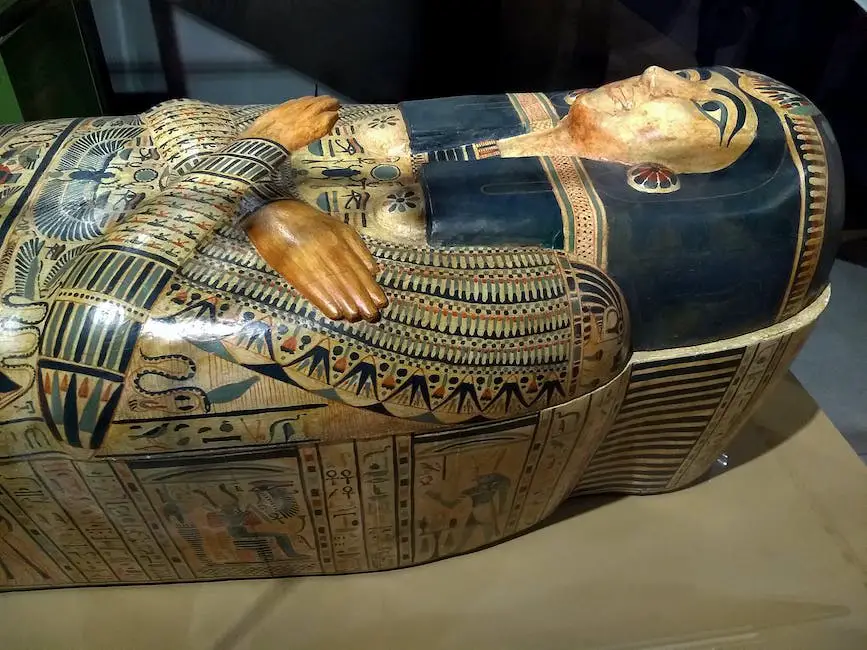
Iconography and Symbolism in Egyptian Wall Art
Delving Deeper: Conveyance of Messages through Iconography and Symbolism in Egyptian Art
Egyptian art transcends the aesthetic, bridging the gap between visual appeal and profound meaning. Intricate symbolism and potent iconography form the cornerstone of this multifaceted expression, conveying essential messages and deciphering the surmisal of an ancient civilization.
Peeling back the intricate layers of Egyptian art, one finds that the code of symbols was far from arbitrary: each form, figure, and colour meticulously chosen serves as an ideogram of broader, culturally relevant ideologies. This cryptic artistic dialogue between representation and interpretation underscores the fascinating realm of Egyptian art.
Animal allegory is one such poignant example of symbolism: the enigmatic Sphinx, a hybrid of a multifaceted lion and pharaoh’s head, epitomises divine wisdom and royal power. The revered scarab beetle, symbolising self-creation, stood for the divine manifestation of the sun god Ra, embodying the cyclical nature of life, death, and rebirth. Such symbology allowed artists to encapsulate complex interpretations rendered through visually engaging motifs.
The pantheon of gods and goddesses presents an impressive fusion of human and animal forms. The deity Anubis, portrayed with a jackal’s head, serves as the protector of the deceased, denoting the passage of the soul into the afterlife. The falcon-headed god Horus signifies the sky and epitomises kingship. This compelling marriage of human and animal forms instils each deity with distinct qualities, delivering the comprehensive spiritual ideology of ancient Egyptians.
In the domain of colours, Egyptians held unequivocal symbolic affiliations. The frequent use of gold, seen in royal statues and other sacred artefacts, symbolises eternity and the brilliance of the eternal sun god. The colour green, often used to depict the flesh of deities involved in death and resurrection, is linked to rebirth and the flooding of the Nile, while red symbolises chaos and disorder.
Embedded within the fabric of their art, we find a strong sense of eschatology. Pyramids, tombs, and temples are decorated with momentous scenes representing the journey of the deceased in the afterlife. Spells and hymns inscribed in hieroglyphics, and vivid portraiture within funerary chambers, offer wisdom to the deceased to navigate through the path to eternal life.
The artistic lexicon of ancient Egypt incorporates a compelling scalar disparity. The ‘Law of Proportion,’ dictates size based on the hierarchical status of depicted subjects, with pharaohs and divine beings clearly dominant. This approach demonstrates ancient Egyptians’ perception of social hierarchy and their reverence for their leaders and gods.
The practice of ‘composite view,’ offering simultaneous multiple angles of a subject, is another potent tool in ancient Egyptian art, delivering dynamism and a broader perspective to their narratives.
In the grand tapestry of Egypt’s artistic legacy, every stroke, symbol, and figure performs double duty, offering a visual feast while subtly whispering an encrypted message. It beckons us to spell out these stories, exploring the messages conveyed through their rich iconography and symbolism, thus immersing us deeper in the mystery inherent in the art of this ancient civilization.
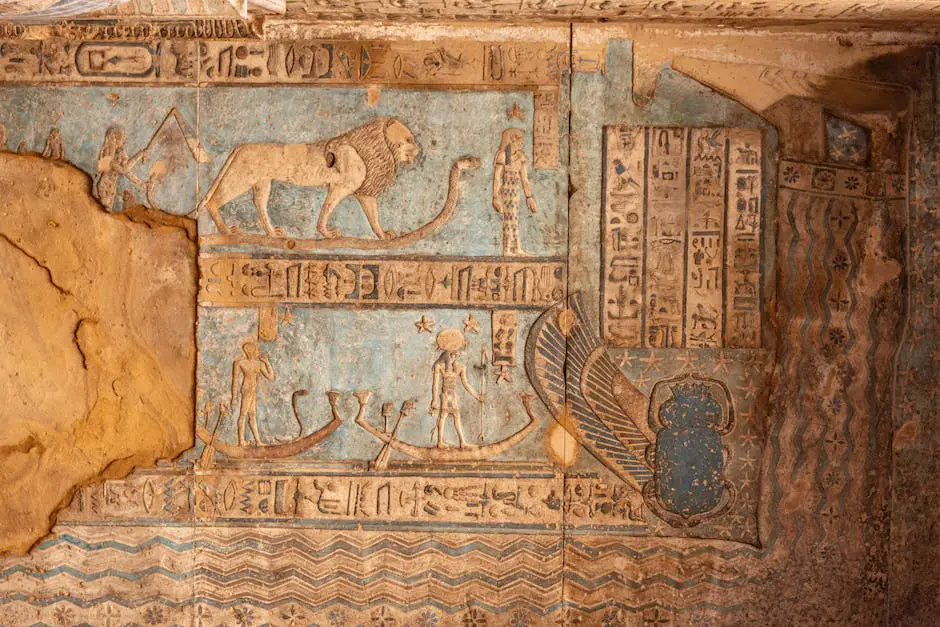
Noteworthy examples of Egyptian Wall Paintings
Diving headfirst into the treasures of Egyptian wall art, one cannot overlook certain masterpieces that manage to outshine any competition in their beauty, complexity, and historical significance. To touch upon these artistic jewels, we can’t help but be drawn towards the majestic scenes from the ornate and powerfully evocative Tomb of Nebamun.
This remarkable sequence of Wall art residing in the Metropolitan Museum of Art, New York, hailed from the tomb chapel of Nebamun, a middle-ranking official from 1350 BCE. Showcasing wild fowling, agricultural scenes, banquet dances, and more, the depth of artistic insight and attention to detail have preserved the vibrancy of life in the New Kingdom Egypt. Passion and precision echo dedicatedly from the faded colour of these scenes.
Subsequently, moving forward in time to 1275 BCE, the Tomb of Ramesses III, belonging to the New Kingdom’s Twentieth Dynasty, is laden with structure and artistic depth. Nestled within the Valley of the Kings, the tomb walls bear creation stories and renderings of the underworld with a raw complexity that only the extraordinary vision of Egyptian artistry could capture.
An array of coloured hieroglyphics follows alongside intricate storytelling of the Book of Gates and Book of the Dead, establishing an astonishing example of the fusion of human and animal forms in the depiction of gods and goddesses. Buried within the hieroglyphs, you’ll find vibrant examples of the symbolic significance of colours in Egyptian art – the red ochre for deserts, chaos and masculine energy; the green of vegetation, health and regrowth; the blue of celestial bodies and divine protection.
Likewise, another significant and beautiful example is the Tomb of Akhethotep and Ptahhotep, a Fifth Dynasty structure, which stretches out to three chapels in Saqqara. Here, the rules of hierarchical representation illustrated through posture and size create a profound, thought-provoking panorama. With scenes depicting farming, hunting, and boating, the work is meticulously detailed and adheres throughout to the Law of Proportion in Egyptian art.
Lastly, one cannot mention Egyptian wall art without ceding attention to Queen Nefertari’s tomb. As the beloved wife of Ramesses II, her burial site is considered the Sistine Chapel of the Nile. The mixture of Astral and Osirian themes appeal not only to the eyes but also strike upon the presence of eschatology and depictions of the afterlife in Egyptian art. Here, art pieces work not just for aesthetic engagement but also the conveyance of encoded messages.
Evidently, the allure and significance of these pieces endure even in the face of millennia. However, each holds a tale as unique and powerful as the history that it represents, serving both as a testament to the lives lived and a promise of the artistic legacy living on. The beautifully complex, historically significant, and deeply emblematic examples of Egyptian wall art continue to define the connection between humanity and the artistry of antiquity.
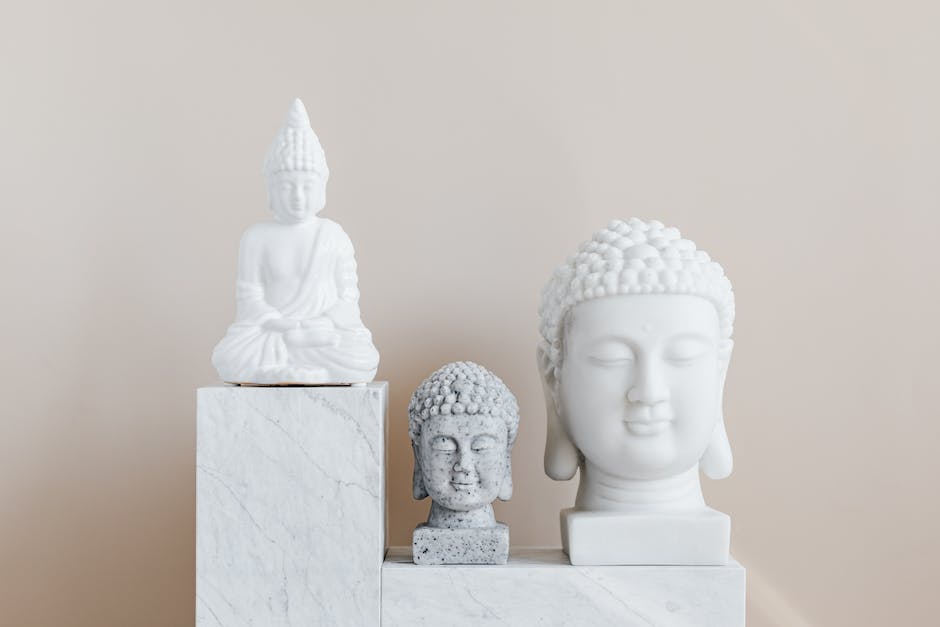
The Impact of Egyptian Wall Paintings on Modern Art
Delving into the Impact of Ancient Murals on Contemporary Art
Regardless of what form art takes in the present day, its roots remain firmly entrenched in an ancient past, with the echo of circumscribed wisdoms. None more so than the influence of ancient murals on the contemporary art space. This article shall endeavour to investigate this inexhaustible subject, shining a touch of light on the profound influence of murals on present and future artists.
One cannot underestimate the power of murals from ancient civilisations to inspire and challenge contemporary artists, prompting them to traverse boundaries both within themselves and their chosen craft. This is particularly the case with Egyptian wall art. The legacy left behind through Egyptian murals has provided not only mentorship but also a benchmark in techniques, interpretation and the creation of art.
Observe the modern use of animal allegory and symbolism in art; an undoubted throwback to ancient Egyptian murals where diverse animal figures symbolised various gods, power, protection and the cycle of life. Who can overlook the emblematic Sphinx or multipurpose scarab beetle? These images remain ingrained in our collective consciousness, an enduring testament to the omnipotence of Egyptian creativity.
Equally, ancient Egyptian murals took symbolism to a sovereign level, with every image rendered carrying a significance greater than its immediate visual allure. Today, symbols continue to permeate art, reaffirming the depth and dually encoded messages within, a practice honed and perfected by ancient Egyptian artisans.
The revolutionarily exact and meticulous representation of profiles and proportions, known as the ‘composite view’ and the ‘Law of Proportion’, elevated Egyptian murals to a zenith of aesthetic and interpretative greatness. These practices persistently encourage contemporary artists to think beyond the humdrum, experiment with perspectives and scales to voice their inner sentiments, thereby pushing the envelope, mutating and evolving art into a platform for catharsis, dissent, and celebration.
Remember, dear reader, the bold manipulation of colours in ancient Egyptian murals. Each shade employed with metaphysical precision. Colour was not just a visual conductor, it was a conduit of innate meanings, something akin to a sunflower’s cheerful yellow or a robin’s red breast. This vivid symbolism penetrates contemporary art, with artists awakening canvases through their palette, creating harmonies and dissonances to tell their stories, each brushstroke an echo of their ancient forebears.
Finally, one must highlight the murals from the tombs of Nebamun, Ramesses III, Akhethotep, Ptahhotep and Queen Nefertari. These murals not only imbuing architectural masterpieces with chronicled wisdom and narrative but also crafting a dialogue between the past and present, a dialogue that continues to motivate, influence and revolutionise today’s artistic panorama.
In our ceaseless odyssey of artistic exploration, the enduring power and spirit of ancient Egyptian murals continue to enchant, to challenge, and to inform. Each gaze into the immutable remnants allows a deeper look into the heart of creativity, the soul of expression, inspiring the modern artist to experiment, invent and continuously evolve. Through this, the mastery of ancient murals lives on, influencing and shaping the art of the contemporary world.
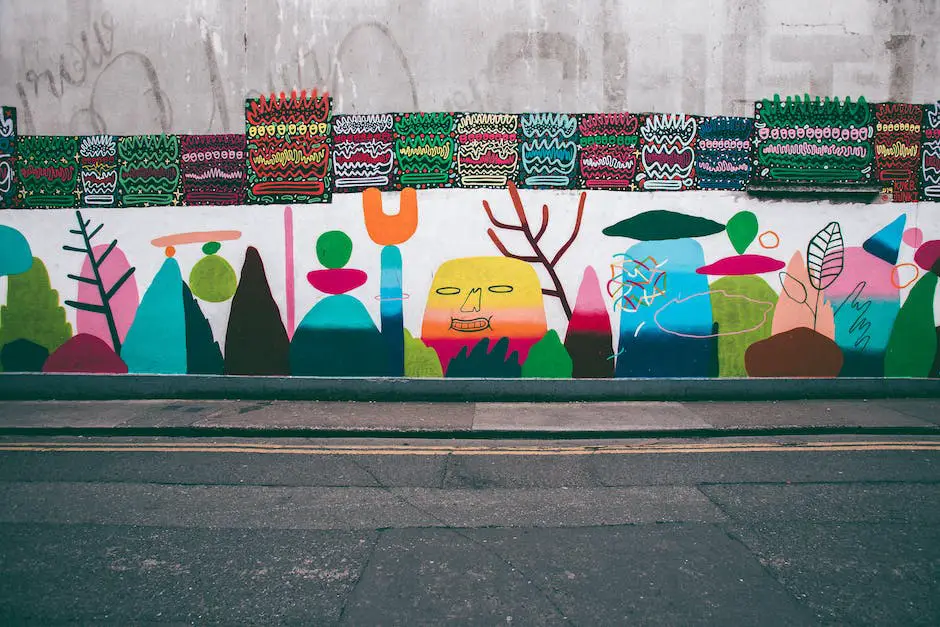
After a compelling journey through the rich tapestry of ancient Egyptian art, it becomes evident how the timeless beauty and intricate symbolism of Egyptian wall paintings shaped and continues to shape our artistic narrative. These illustrious works are not just mere paintings; they are vibrant chronicles, illuminating insights into a society that might otherwise have been lost to the sands of time. The stirring remnants of this awe-inspiring culture, whether in the sacred temples of Luxor and Karnak or the noble tombs in the Valley of Kings, still resonate in the characteristics of contemporary art, echoing the human quest for expression and immortality.
Recommend0 recommendationsPublished in Art History




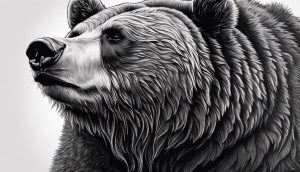
Responses